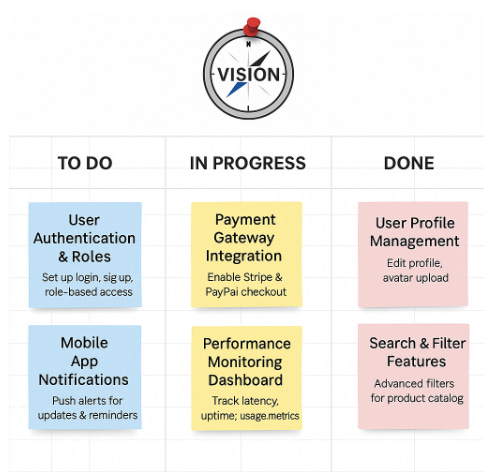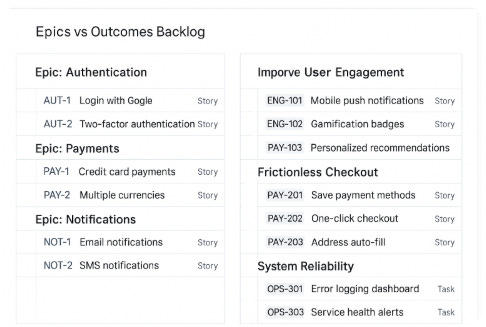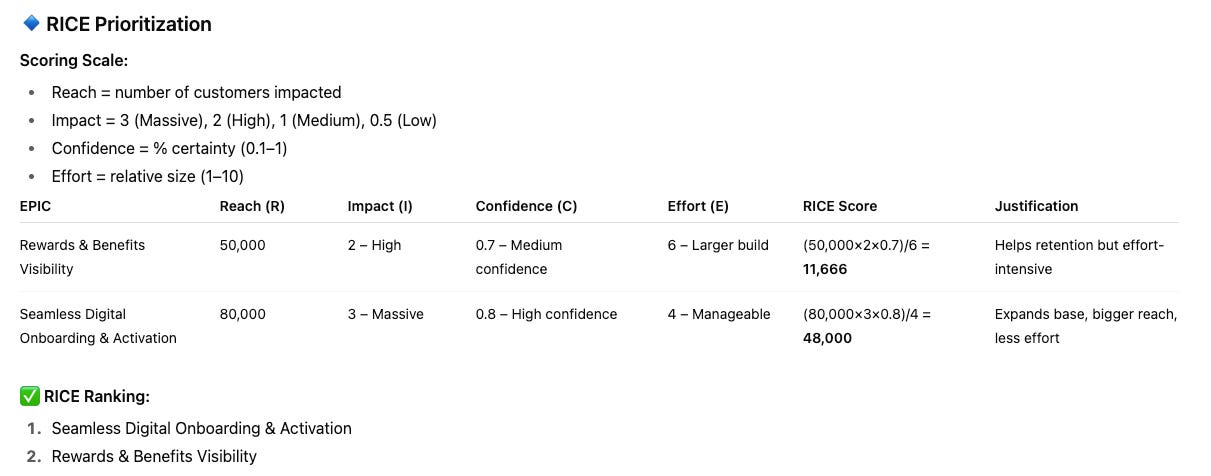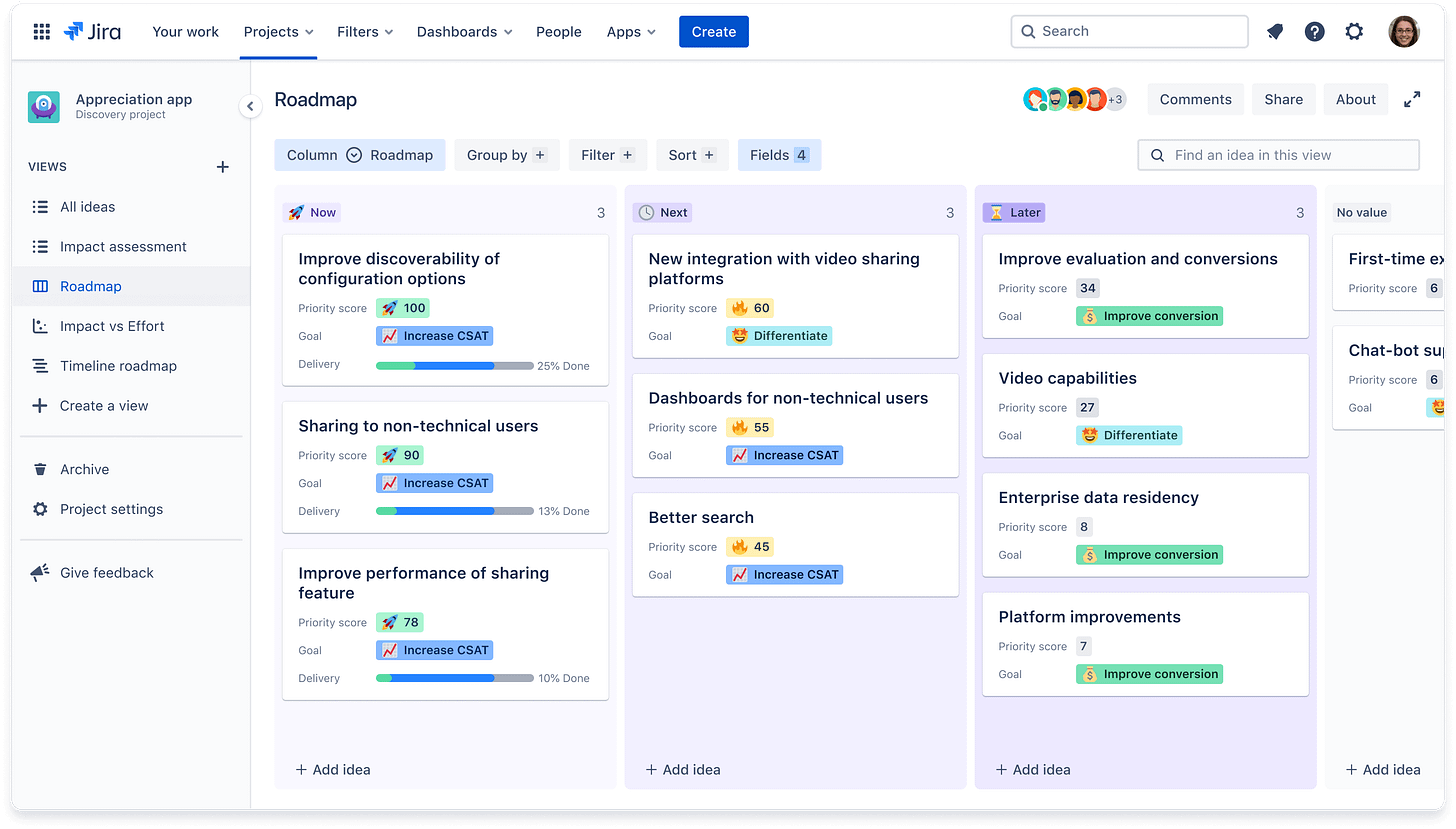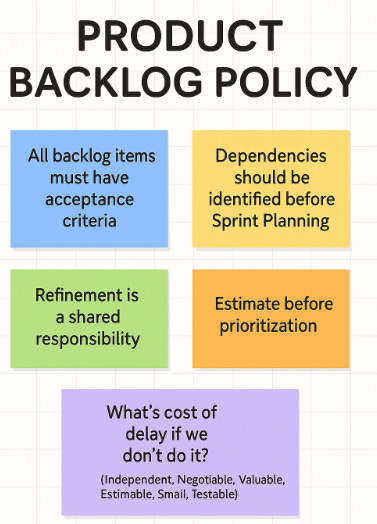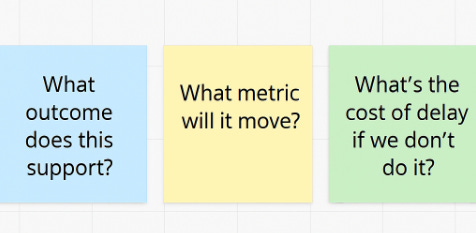5 Strategic ways to stop your Backlog becoming a dumping ground
Keep your backlog as a product compass, not just a parking lot for requests!
Most backlogs start with good intentions.
But over time, they become:
A dumping ground for urgent requests.
A wishlist for whoever shouts the loudest.
A tracker of tasks, not a driver of product strategy.
The result? Teams deliver quickly but rarely meaningfully.
Your job is to ensure the backlog reflects strategic outcomes—not just noise.
Strategy 1: Anchor Everything to Product Vision
A backlog without vision is just a pile of Post-its.
Action Steps
Write a one-page Product Vision and keep it visible at all times.
Begin backlog refinement sessions by reminding: “Here’s our vision. Do today’s items move us closer to it?”
Use “Vision Tags” on backlog items (e.g., Retention, Growth, Cost Optimisation).
Tip: Stakeholders may say, “Everything connects to the vision somehow”, ask back - “Show me the metric this item impacts directly.” That will filter wish-list items fast.
Strategy 2: Organise by Outcomes, Not Features
Most short-term asks are “we need this feature.” But features are meaningless without outcomes.
Action Steps
Create “Outcome Buckets”: e.g., “Reduce Onboarding Time,” “Lower Support Tickets.”
Sort all backlog items under these outcomes.
Items with no outcome? Park them in a “Parking Lot” board until justified.
Tip: If stakeholders resist—“Why can’t you just add my feature?”, reframe the conversation: “Help me see what problem this solves. If it solves nothing, it won’t move ahead.”
Strategy 3: Use Structured Prioritisation (RICE/WSJF)
Without structure, all requests feel equally urgent.
Action Steps
Run backlog prioritisation workshops using RICE (Reach, Impact, Confidence, Effort) or WSJF (Cost of Delay ÷ Job Size).
Score items collaboratively with stakeholders.
Publish the results transparently so everyone sees trade-offs.
Tip: If stakeholders try to game the scoring (“Of course my feature has 100% impact!”), insist on group scoring. When everyone debate together, the numbers balance out.
Strategy 4: Time-Box Refinement to Prevent Backlog Bloat
Backlogs get bloated when you refine everything “just in case.”
Action Steps
Only refine 1–2 sprints ahead in detail.
Keep future items as lightweight placeholders.
Schedule quarterly backlog reviews to prune outdated items.
Tip: If teams feels worried: “What if we need those items later?”, show them: “If we need it, it’ll resurface naturally. If not, we’ve saved time refining irrelevant work.”
Strategy 5: Coach Stakeholders on Backlog Discipline
Often, it’s not the team—but stakeholders—who treat backlog as a “request box.”
Action Steps
Run a 15-minute Backlog Primer in stakeholder syncs:
Step 1: Backlog ≠ Wish List
Step 2: Backlog = Strategic Investment
Step 3: Requests must tie to metrics, not preferencePublish a Backlog Policy Doc: rules for what makes it into the backlog.
Share stories of how poor backlog discipline derailed past projects.
Tip: If stakeholders initially see this as “gatekeeping”, reframe it as “This is not blocking you—it’s protecting your investment. If everything is urgent, nothing is urgent.”
Bonus Tool: The “Backlog Value Canvas”
For each backlog item, fill out three boxes:
What outcome does this support?
What metric will it move?
What’s the cost of delay if we don’t do it?
If stakeholders can’t answer these, the item isn’t ready for the backlog.
Ready to Turn These Strategies into Action?
Join the Scrum Master Bootcamp!
Want to put these strategies into action and experience the impact firsthand? Join my Scrum Master Bootcamp, where you’ll work through these exact challenges and build the skills needed to drive real value in your team. This isn’t just theory — it’s hands-on practice that will transform how you manage leadership’s expectations.
👉 Click to explore more and start mastering the tools and techniques that can change the way you work as a Scrum Master.
Don’t just learn — experience the difference in real time.
Why Subscribe
Each week, I share battle-tested strategies, messy lessons, and practical tools that help Scrum Masters, Product Owners, and change agents like you make sense of chaos — without sugar-coating it.
If you found this useful, subscribe.
This isn’t theory. It’s real work, made a little easier — one step at a time.
Thanks for reading Strategy For Success! Subscribe for free to receive new posts and support my work.
📝 Your Feedback Matters!
I have started writing this newsletter and your feedback will help me improve it further. You may leave your feedback in Comment on how can I make this newsletter valuable for you.
“Just because I understand it, does not mean everyone understands it. And just because I do not understand it, does not mean no one understands it.”
Anand Pandey
Thanks for reading Strategy For Success! Subscribe for free to receive new posts and support my work.



